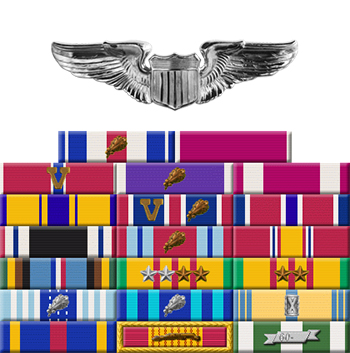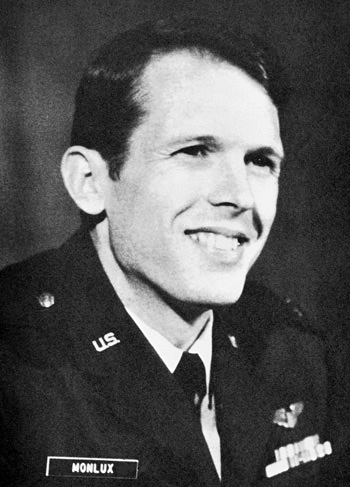
|
Harold D. Monlux |
 |
|||
| Rank, Service | ||||
Colonel O-6, U.S. Air Force |
||||
| Veteran of: | ||||
|
||||
| Tribute: | ||||
Harold Monlux was born on August 18, 1941, in Omaha, Nebraska. He was commissioned a 2d Lt through the Air Force ROTC program at the University of Tulsa in Tulsa, Oklahoma, in February 1964, and went on active duty beginning January 18, 1965. Lt Monlux next completed Undergraduate Pilot Training at Vance AFB, Oklahoma, in February 1966, followed by F-4C Phantom II Combat Crew Training in September 1966. His first assignment was as an F-4 pilot with the 559th Tactical Fighter Squadron at Cam Rahn Bay, South Vietnam, from October 1966 until he was forced to eject from his stricken aircraft over North Vietnam and was taken as a Prisoner of War on November 11, 1966. After spending 2,306 days in captivity, Captain Monlux was released during Operation Homecoming on March 4, 1973. He was briefly hospitalized to recover from his injuries at Sheppard AFB, Texas, and then completed flight refresher training at Randolph AFB, Texas, before serving as a Survival, Evasion, Resistance and Escape (SERE) Instructor at Fairchild AFB, Washington, from December 1973 until he left active duty and went into the inactive Air Force Reserve on June 9, 1975. He began actively serving in the Air Force Reserve on October 31, 1976, where he served as an Air Force Intelligence Systems Staff Officer (Asia Analyst) with Detached Training Site 42, Intelligence Reserve Forces with the Air Force Intelligence Service at Tinker AFB, Oklahoma from October 1976 to August 1982. His next assignment was as an Air Force Academy Admissions Liaison Officer from September 1982 until his retirement from the Air Force Reserve on august 1, 1989. While serving in the Air Force Reserve, he served in the Oklahoma House of Representatives from 1976 to 1980. Harold Monlux Flew West on January 6, 2005, and was buried at the Memorial Park Cemetery in Tulsa, Oklahoma. His widow, Carol Lynn Monlux (1942-2021) is buried with him. |
||||
|
||||

